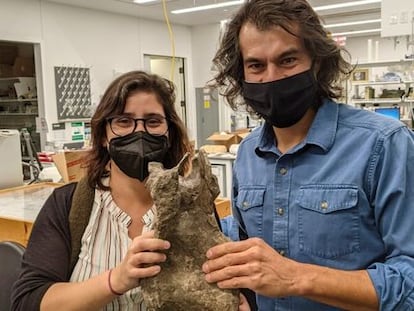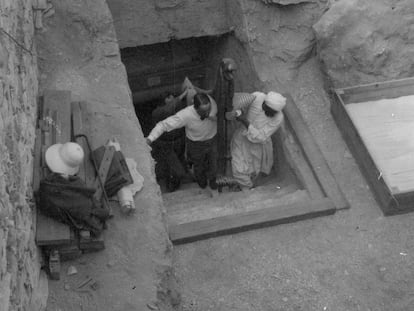One of the world’s largest megalithic concentrations discovered in Spain
Archaeologists describe the finding as ‘unique.’ It includes the discovery of 526 menhirs, or standing stones, from between the sixth and third millennia BC


As the price of avocados never seems to stop rising, the owner of the 600-hectare farm La Torre-La Janera, in the Spanish province of Huelva, decided to cover his property with avocado seeds. However, the local council – interested in the possible archaeological potential of the land – required that a survey be carried out first. The result, while displeasing to the farmer, has been spectacular from the standpoint of the archaeological community.
Three megalithic sites have subsequently been discovered. The stone monuments were likely constructed for the purpose of monitoring the growing seasons and observing astronomical events. Experts from the universities of Huelva and Alcalá de Henares noted that the massive complex began to be erected at the end of the sixth millennium BC and stood for almost 3,000 years.
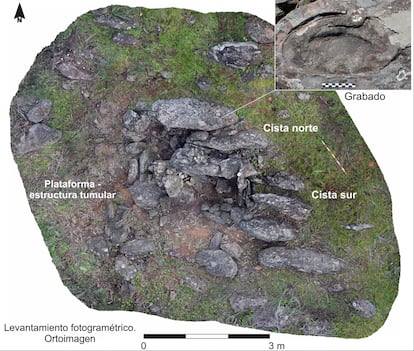
La Torre-La Janera is located on the left bank of the Guadiana River. The site is located about 15 kilometers from the coastline… but this was not always the case. In recent prehistory, between 6,500 and 4,000 years ago, the sea level was two meters higher – the retreat of the waters has resulted in the current location.
New surveys, accompanied by the photo-interpretation of satellite and aerial images, as well as the use of LiDAR (laser) data, have revealed a much richer world archaeologically. Dr. Bueno-Ramírez, professor of prehistory at the University of Alcalá de Henares, confirms that “to date, no such compact concentration of megalithic sites is known, with such expectations of obtaining archaeological data, anywhere in Europe. The important thing is that the local councils and mayors in the region – as well as the owners of the land – are very much involved.”
An article published by a group of Spanish archeologists in the journal Cuadernos de Prehistoria notes that “La Torre-La Janera is [the most] unique site discovered so far in the Iberian Peninsula. The stone architectures and other manifestations associated with them refer to different chronological stages of recent prehistory… monuments with different functions and technical traditions coexist.” The authors go on to say that the site “stands out for the high density and diversity of sandstone megaliths and associated findings, such as extraction areas, rock carvings and dry-stone structures.”
A total of 526 menhirs (or ritual stones) – either standing or collapsed – have been excavated. Their shapes are varied: they stand between one and three-and-a-half meters tall. On the surfaces, “the polishing and abrasion in specific areas” are still visible. Experts emphasize that the “incised engravings have symbolic value.”
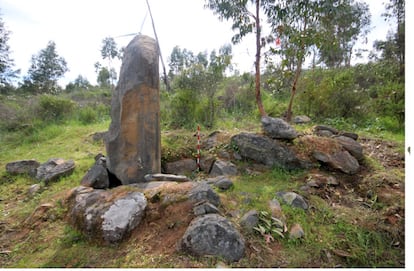
Most of the menhirs are concentrated in 26 alignments. The alignments, containing one to six rows, can reach up to 250 meters in length in some cases. The stones were built “on the tops of hills with a clear horizon towards the east, from where the sunrise could be observed.”
In addition to the standing stones, numerous burial grounds have also been detected in La Torre-La Janera. Some have funerary containers, while others may have been set up for commemoration rituals, possibly involving offerings to the deceased. The stone-encased burial grounds have different lengths, ranging between six and 17 meters. In addition, 41 stone coffins built to hold two or more bodies each have been documented.
“The burial mounds functioned both as houses of the dead and ritual spaces,” the article in Cuadernos explains.
As for the three megalithic enclosures found on terraces or platforms, they are “large open constructions built on staggered levels. Inside, structures with diverse functions are concentrated.” Studies indicate that they are “located on prominent hills, with wide visibility and great landscape perceptibility, whose peaks and slopes were topographically transformed. They are concentrated around a stream and house reused menhirs. One of the enclosures occupies 1.95 hectares of space: it consists of a circular platform at the top and two surrounding levels made up of large stone walls. On the southeast slope, there are up to six levels, containing 15 reused menhirs, coffins and other masonry constructions.
The surroundings of the enclosures reveal blocks in the process of transformation, quartzite hammers and discarded supports. There are also engravings: 10 have been counted so far, mainly formed by circles and incised lines. Some engravings are overlaid on natural erosion marks in the stones to take advantage of linear grooves.
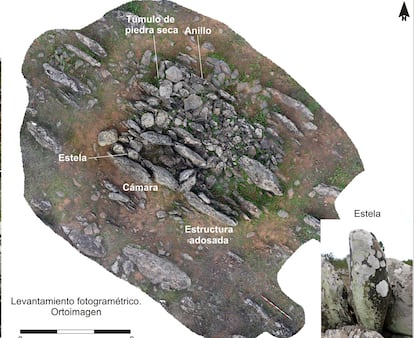
A recently-released archaeological report states that “the fusion between the natural and the anthropic gives La Torre-La Janera its own character, with most of the monuments having a rough and simple appearance. The alignments reveal the existence of open monuments with more complex forms and functions, possibly for the purposes of monitoring the cycle of the seasons and observing astronomical events. They were erected in outstanding locations, with wide visibility of the landscape. They were connected spatially with the surrounding land, horizon and sky, as is common in [these] types of groupings.”
The authors of the article in Cuadernos de Prehistoria summarize: “The discovery of La Torre-La Janera provides new arguments that reinforce the interpretations of Atlantic megalithism as one of the oldest human phenomena aimed at the transformation of territories. Consequently, the site broadens the horizon of knowledge of the megalithisms of Western Europe and the research potential of the Iberian Peninsula.”
The comprehensive analysis of the site began in 2021 and will likely conclude by 2027.
Tu suscripción se está usando en otro dispositivo
¿Quieres añadir otro usuario a tu suscripción?
Si continúas leyendo en este dispositivo, no se podrá leer en el otro.
FlechaTu suscripción se está usando en otro dispositivo y solo puedes acceder a EL PAÍS desde un dispositivo a la vez.
Si quieres compartir tu cuenta, cambia tu suscripción a la modalidad Premium, así podrás añadir otro usuario. Cada uno accederá con su propia cuenta de email, lo que os permitirá personalizar vuestra experiencia en EL PAÍS.
¿Tienes una suscripción de empresa? Accede aquí para contratar más cuentas.
En el caso de no saber quién está usando tu cuenta, te recomendamos cambiar tu contraseña aquí.
Si decides continuar compartiendo tu cuenta, este mensaje se mostrará en tu dispositivo y en el de la otra persona que está usando tu cuenta de forma indefinida, afectando a tu experiencia de lectura. Puedes consultar aquí los términos y condiciones de la suscripción digital.
More information
Últimas noticias
Imelda Castro, the woman who wants to rule the cartel battleground of Sinaloa
The new victims of the Republican war on Obamacare: Millions hit by soaring health insurance premiums
A country divided on migrant rights: Some US states expand protections while others restrict them
Venezuela authorizes the release of another 87 political prisoners
Most viewed
- David King, chemist: ‘There are scientists studying how to cool the planet; nobody should stop these experiments from happening’
- Reinhard Genzel, Nobel laureate in physics: ‘One-minute videos will never give you the truth’
- Oona Chaplin: ‘I told James Cameron that I was living in a treehouse and starting a permaculture project with a friend’
- Sinaloa Cartel war is taking its toll on Los Chapitos
- World economy in 2026: Three scenarios and a dystopia
